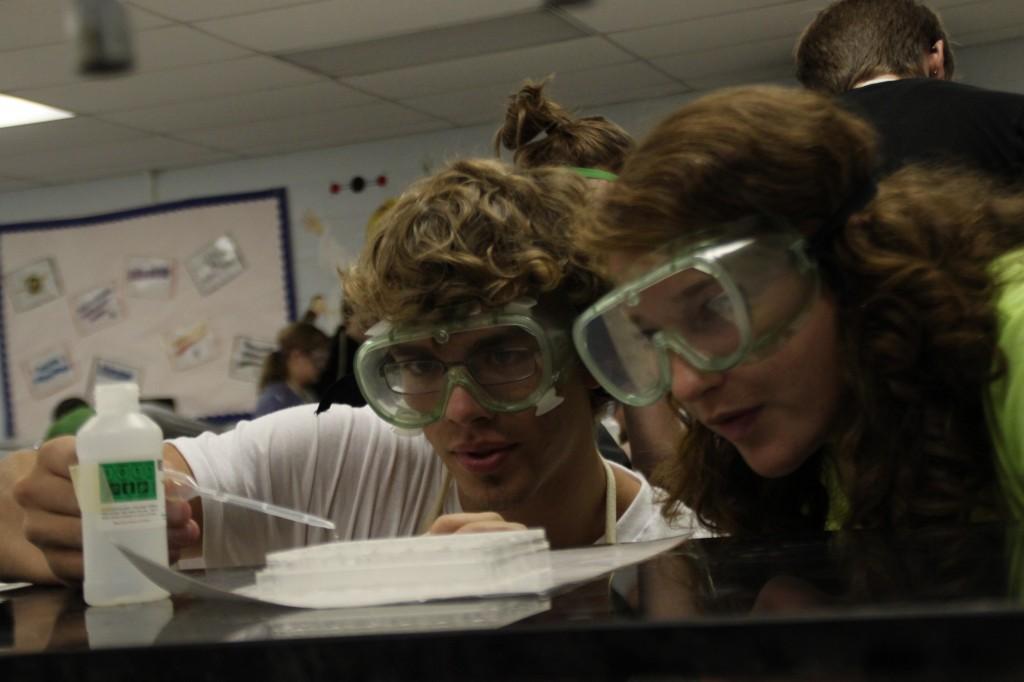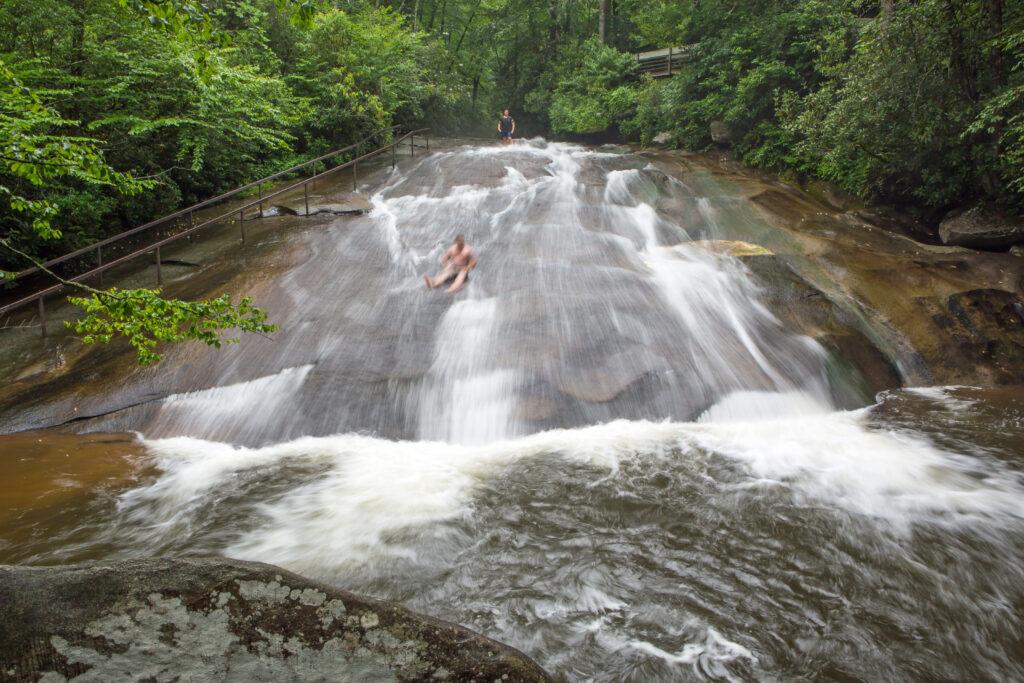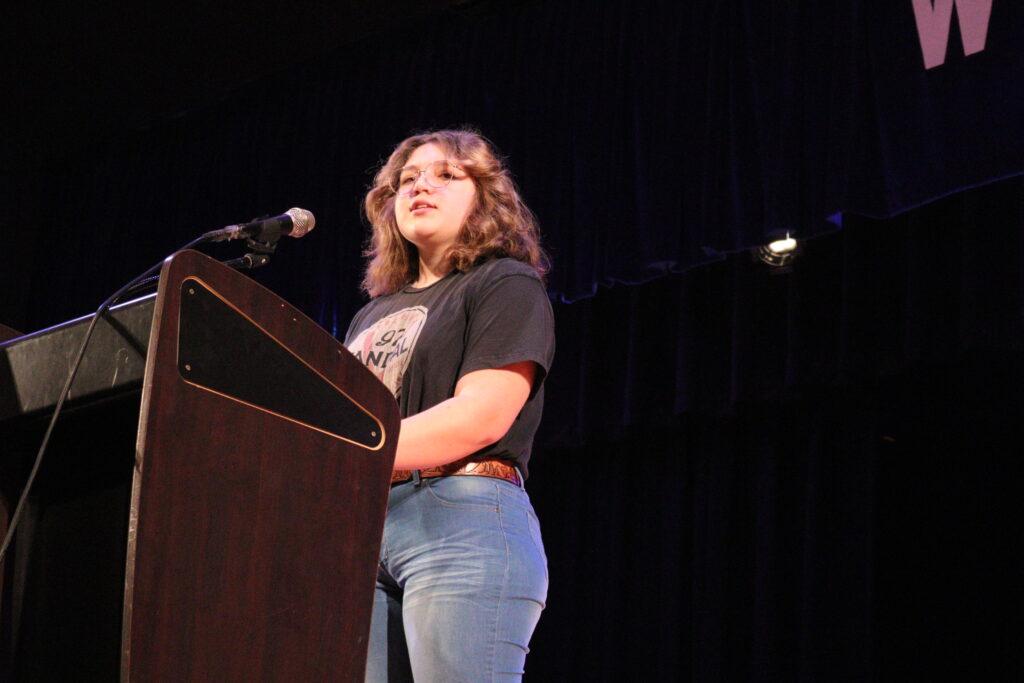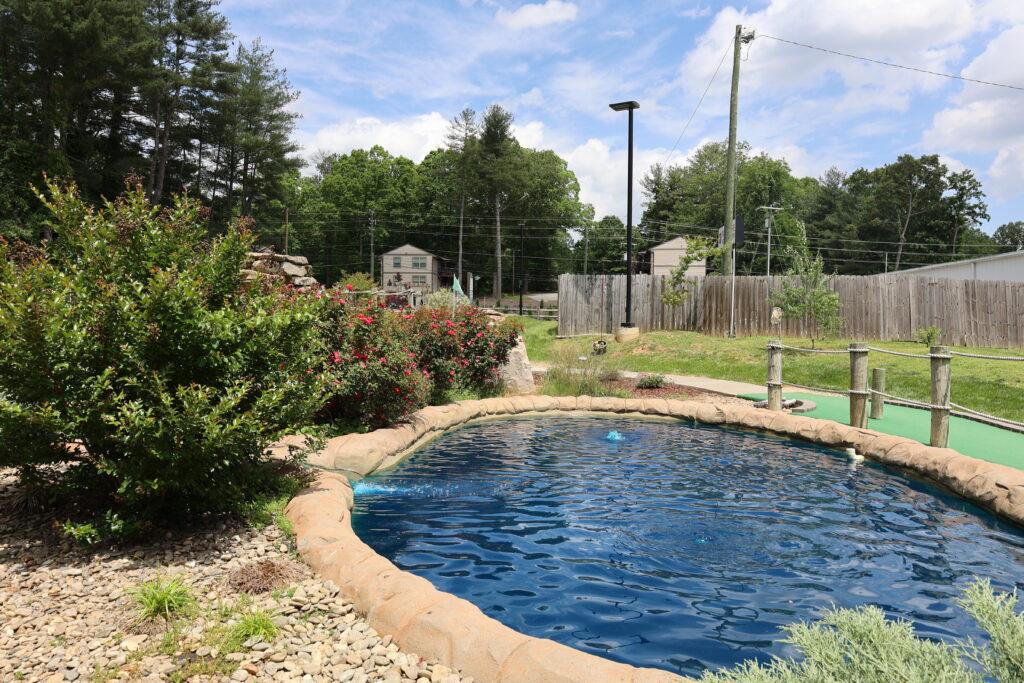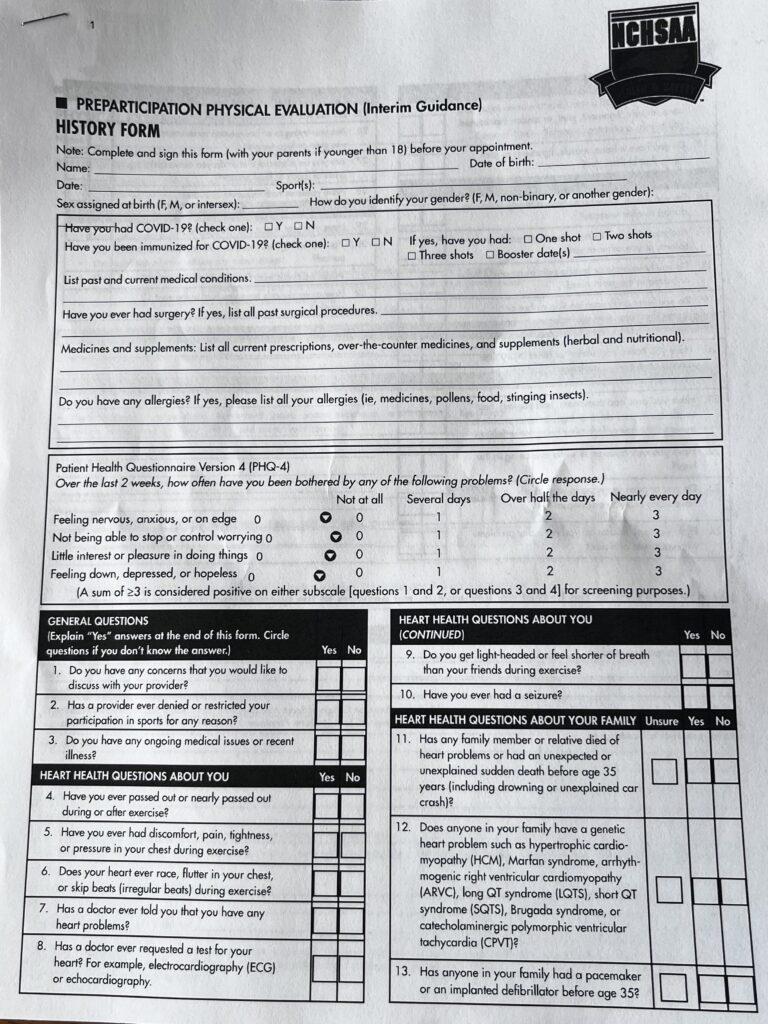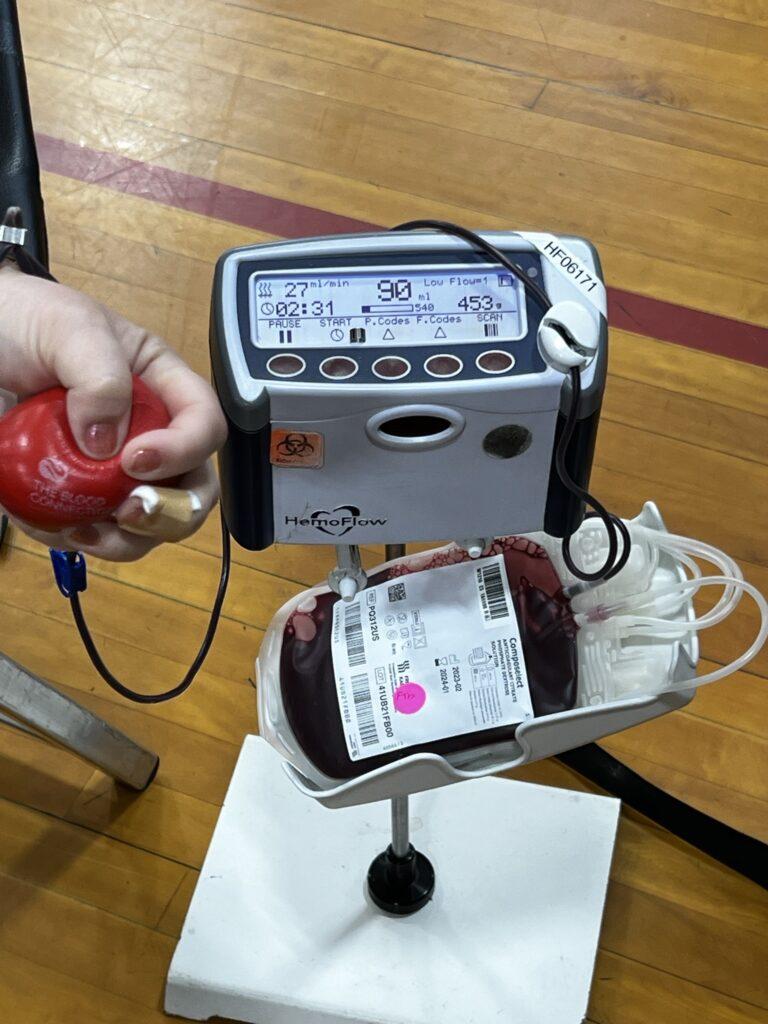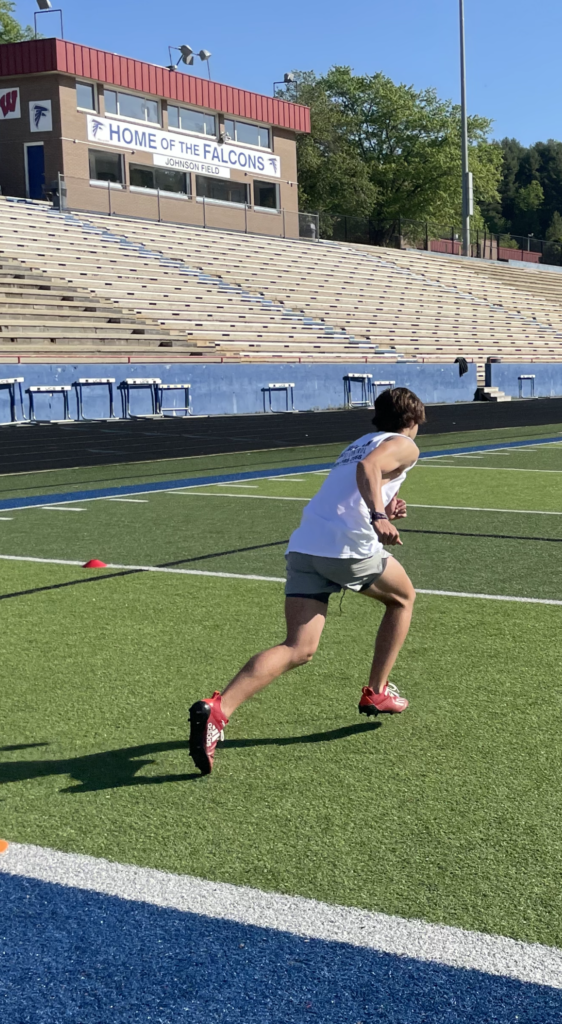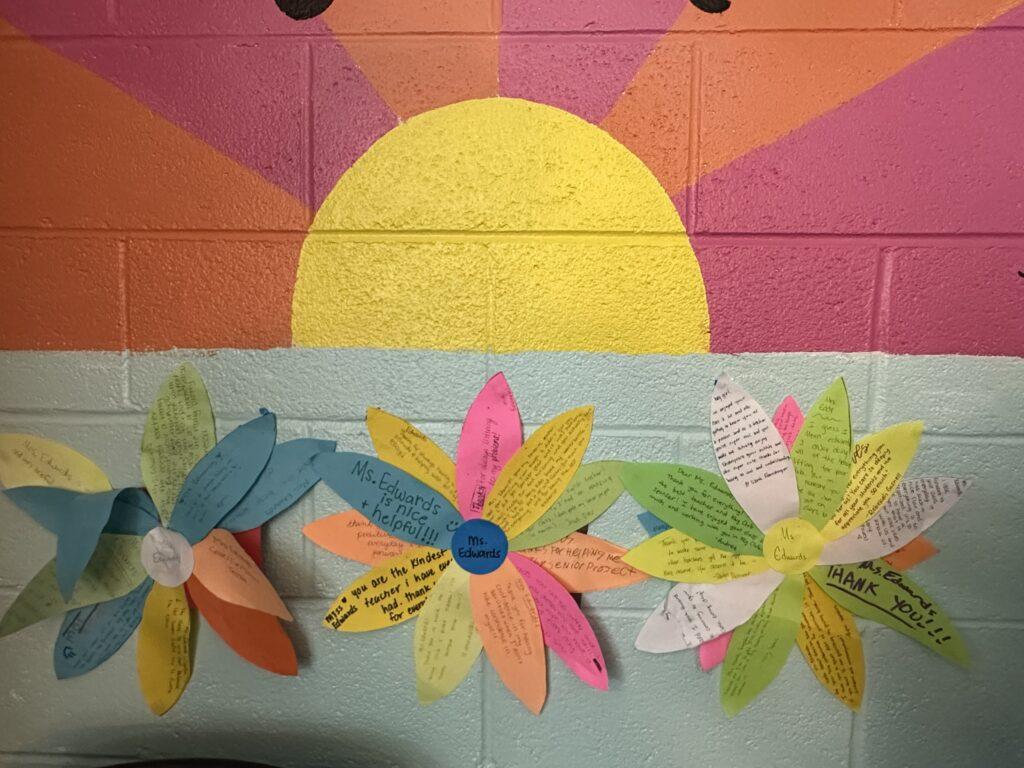Ready. Set. Launch! The experiment soared into the air, then fell to the ground, landing softly on the grass as the students cheered. Junior Jennie Battle couldn’t believe what she had created. Using bottles, cardboard, duct tape and glue, Battle had invented a bottle rocket.
“I decided to become involved with STEM club because I really like science,” Battle said. “I don’t like math that much, but I really wanted to become more knowledgeable about technology and engineering, and I thought that this would be the best way to do it.”
Science, Technology, Engineering and Math (STEM) Club is the new science club that replaced Astronomy Club. The club meets weekly to delve into a variety of science and engineering experiments. Junior Connor Courtney was elected president of the club. Battle and junior Nathan Connor are co-vice presidents.
“Usually we have an experiment of the week or a main goal that we are trying to accomplish during the meetings,” Battle said. “One time we were looking at the relationship between pressure and space. We stuck someone in a garbage bag and we used a shock-vacuum to take all the air out of the bag. Since there wasn’t any air in the bag, it was just a vacuum in there and the person couldn’t get out.”
Junior Evan Shook said club sponsor Larry Ashcraft really tries to make science fun for its club members by focusing on approaching learning through experimentation. “Projects can range from supersaturated solutions and dealing with chemistry to taking apart computers,” Shook said. “We built bottle rockets one time and tested them out on the football field. We just have all sorts of different things going on.”
Along with building and constructing bottle-rockets, students in STEM club also disassembled old digital video recorders to understand the inner mechanisms of the machines.
“At one meeting we took apart a bunch of hard drives and DVR players just to look at the stuff that was inside,” Battle said. “We took apart one and just looked inside and tore apart the stuff that was inside and it was really cool.”
STEM Club draws students who are interested in science as well as students who are considering science- and math-related careers.
“I’ve always been interested in science ever since I was little and my dad got me some science kits. I always had fun with them,” Shook said. “It’s kind of progressed to me wanting to, when I grow up, make the world a better place through science, through engineering and creating better ways for the world to function. That is the career path that I’m taking.”
Ashcraft and chemistry teacher Amy Zalevskiy work with club members.
“STEM Club is a really good thing. It allows you to do fun things that you wouldn’t be able to do in a science class,” Zalevskiy said. “That makes science more interesting.”
When you have a random question that instead of asking it in class, and risk getting ridiculed, you actually can investigate something that you’re interested in.”
Many of the members in STEM club would love to see the club grow and gain more recognition in the coming years. According to Courtney the club is still in its developmental stages and hopefully will grow as people hear about the fun other members are having. Courtney worries that science might be losing its intrigue for today’s high school students and feels that STEM club could contribute to regenerating an interest.
“I would definitely say that teens are less interested in science. I mean, it’s a modern age. Kids are more into cell phones and video games then learning. I think that a lot of people have kind of forgotten about learning which can still be fun if you do it right,” Courtney said. “Also, I think that science and math get kind of a bad rep. for how they’re taught. Teachers focus a lot on what kids need to know for their final exam but they never get to go into what kids might be interested in. I think if they did, they could expanded a lot and kids would be more interested to come to their class and learn the topics.”
Zalevskiy hopes that the changes being made in the state science curriculum will cause students to become more curious about science and math.
“I think that the state is on the right track. We’ve gone through redoing our curriculum and getting to higher level topics earlier,” Zalevskiy said. “Even though that does kind of put a crunch on teachers, and it does make the kids learn more, they’re more interested in it because it’s something new, not just a re-hash of years before, that they have heard over and over and over again.”
Whether a student is interested in a STEM career or just interested in science and experimenting, STEM club provides an environment for students to learn.
“Science is important. It’s what we found the basis of our progress on and our understanding of things,” Shook said. “Especially in science, and math goes right along with science, the more people interested, the more progress we make in those fields and the more progress we make as a society.”
By Anna Yarbrough

